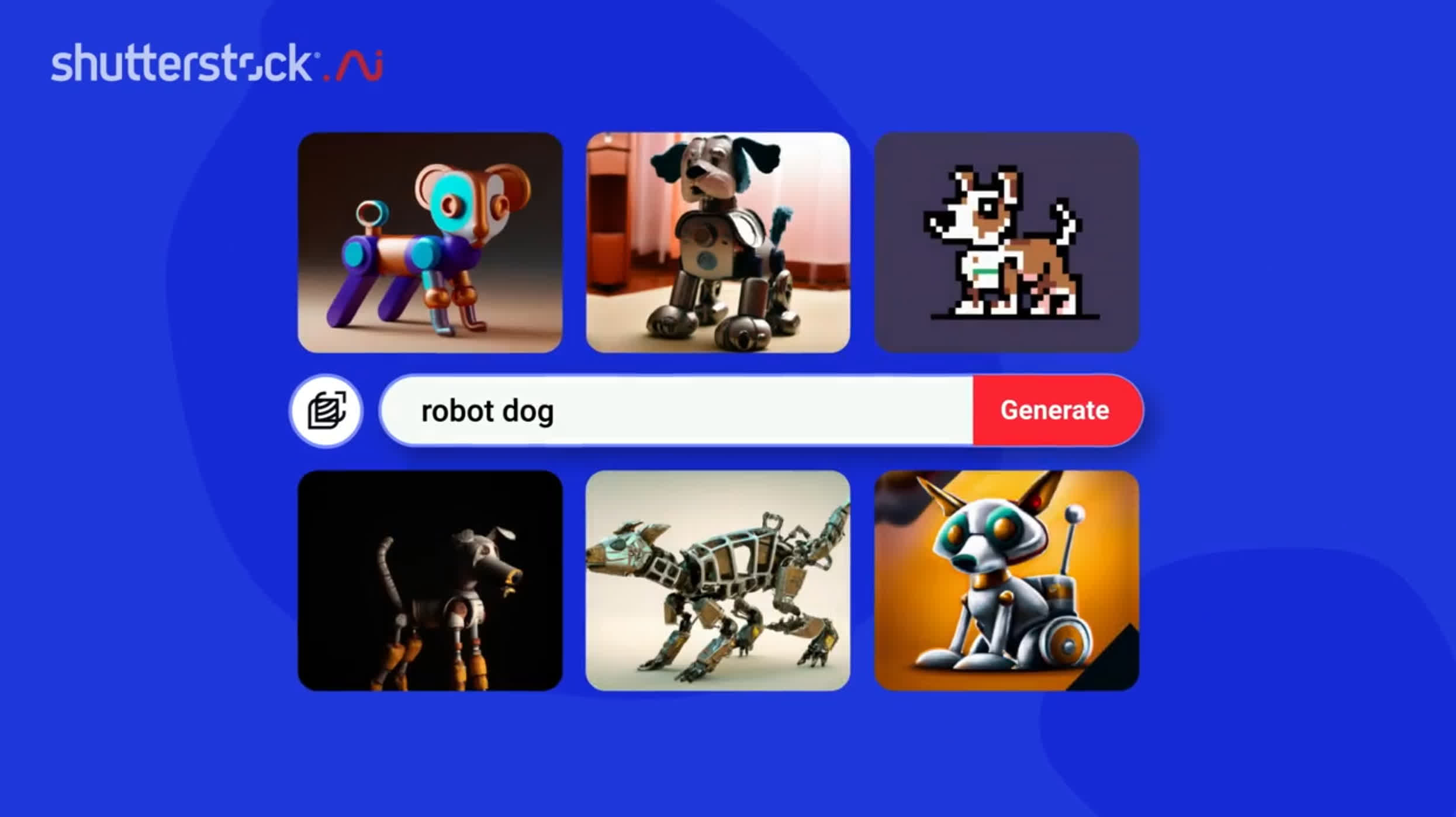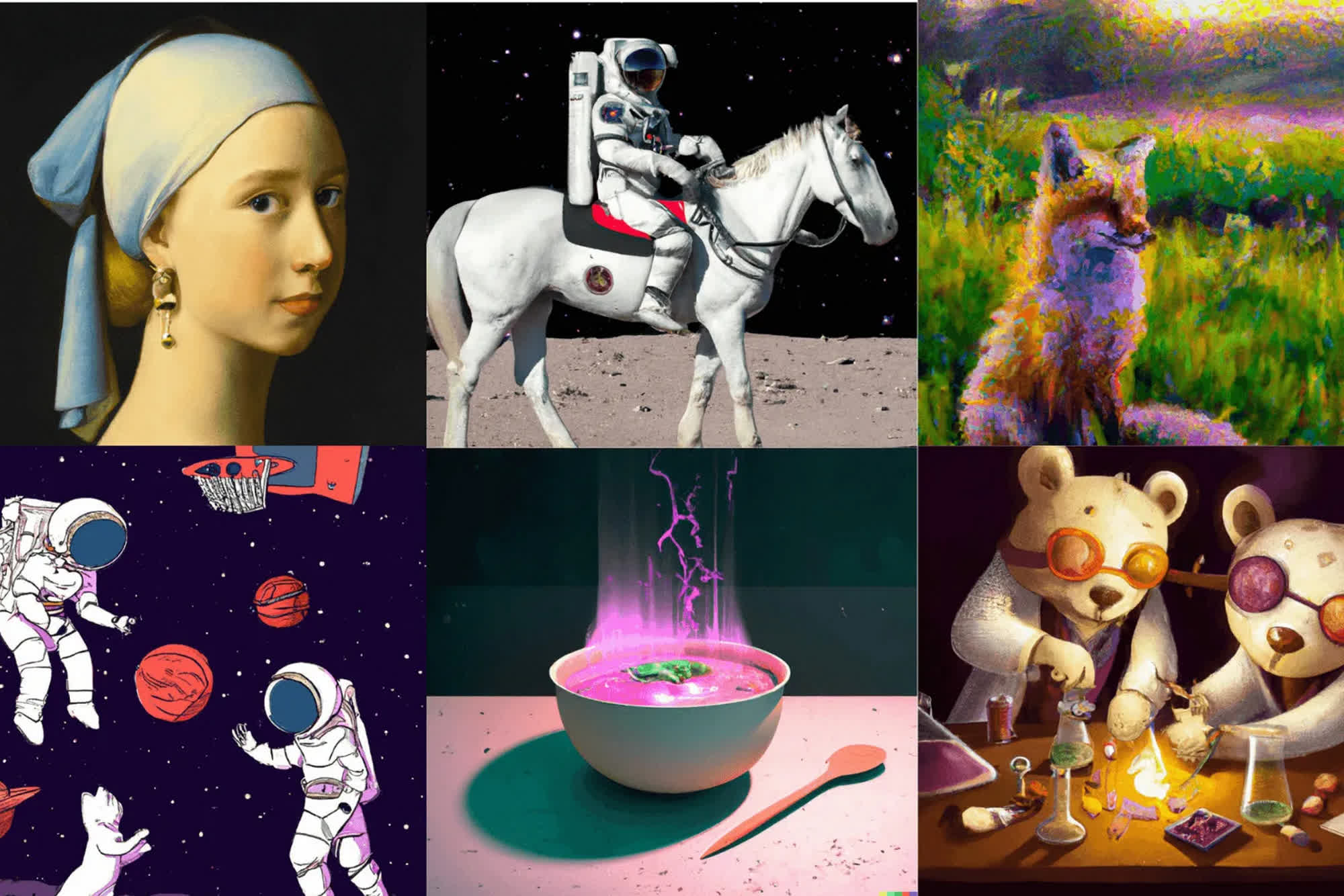A hot potato: Shutterstock has opened the floodgates for selling and licensing artworks created with machine learning algorithms. The company says the new service follows an "ethical approach" to AI-based content, paying creators, while offering instantaneous gratification to its users.
While the debate about AI-assisted content is still raging on the internet and in courthouses, Shutterstock is pushing its plans forward: the stock photography giant has just opened its AI image generation platform for paying customers, promising a novel way to create artworks that can be used in professional projects but are also responsible towards original creators.
Now available in beta as a part of the Creative Flow platform, Shutterstock AI is the result of a strategic partnership with OpenAI, which is providing the actual generative algorithms previously trained on Shutterstock's own stock material.
Now customers won't need to be design experts or have access to entire creative teams to "create exceptional work," Shutterstock CEO Paul Hennessy stated. The new AI tools are "built on an ethical approach and on a library of assets that represents the diverse world we live in," the CEO remarked, while providing due compensation to the artists that contributed (albeit unwillingly) to the development of these new machine learning models.

According to the New York-based company, Shutterstock AI is set apart from other generative platforms because of its ease of use, claiming it will return high quality images from even a single word, which is different to the more complex prompts usually attached to high quality images generated with Stable Diffusion, for example.
That will need to be tested and proven, of course, but Shutter is selling the idea of convenience where you can now access a one-stop-shop for all creative needs, searching for stock images, creating new artwork and eventually polishing a newly generated graphics blob with easy-to-use editing tools.
According to early testing, Shutterstock AI provides four AI-generated images for every textual prompt. Quality of the results is a mixed bag, while the legal status of the overall generative technology is still up in the air.
